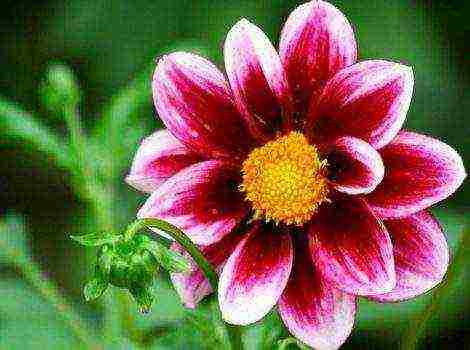Content
- 1 Methods and timing of reproduction of chrysanthemums
- 2 Chrysanthemums, planting in spring and autumn
- 3 Chrysanthemums, care - watering, feeding, pruning, shelter
- 4 How to create globular chrysanthemum bushes
- 5 Persistent and hardy chrysanthemums: growing and caring for the garden
- 6 Chrysanthemum varieties for planting and care in the open field: take into account the nuances
- 7 The best garden chrysanthemums: planting and care in the garden or flower bed
- 8 Methodically and carefully: how to care for a chrysanthemum in the garden
- 9 Reproduction and transplantation of chrysanthemums in the garden: how to care correctly

Chrysanthemum is called the queen of autumn for a reason, because these pretty flowers of bright colors adorn our gardens from September until the very frost.
There are a great many types and varieties of chrysanthemums, but, remarkably, there is no single system for their classification. In different countries, they are divided into classes (in Germany and France there are 10, in the USA and Great Britain - 15). But one way or another, the beauty and grandeur of these noble flowers does not suffer from this - chrysanthemums have been and remain one of the most popular among lovers of autumn flowers.
Planting chrysanthemums
Choosing a suitable place for a chrysanthemum bush is one of the most important moments when planting it. The bush should be located in a warm, sunny place, protected from the winds. This will guarantee rapid growth and branching, development of a good bush shape and safe wintering.
This plant categorically does not tolerate stagnant moisture in the roots, so try to choose a place for planting on a hill, if possible. The soil under the chrysanthemums should be loose, fertile, breathable and permeable. Soil acidity - closer to neutral, slightly acidic soils are also suitable. If the soil cover of your site is clay or sandy, then before planting chrysanthemums, it should be improved with organic matter. An ideal fertilizer for this is humus or vermicompost, and complex fertilizers will not be superfluous.
Chrysanthemums should be planted in the spring, when the threat of return frosts has passed, or in the fall, at least two weeks before the onset of frost. Choose a cloudy or rainy day for gardening. Prepare a hole for each bush or one common trench, where you place the seedlings at intervals of 30-50 cm. In order to speed up the rooting of the chrysanthemum, after planting, pour the trench with Kornevin's solution. After that, pinch the growing point at each bush, and then cover the seedlings with spunbond or other covering material. It should be removed when the seedlings grow.
Caring for chrysanthemums in the garden
Chrysanthemum is not the most capricious flower; to care for it outdoors, you still need to know some secrets.
So, for example, when the eighth leaf appears in the seedlings, the top of the plant and young side shoots should be pinched so that your chrysanthemum has a beautiful bush shape.
As for the main points of caring for perennial chrysanthemums, they are as follows:
- plentiful watering is required, while the water must be rainwater or settled, and it must be poured at the root - they do not like sprinkling of chrysanthemums;
- after each watering, the soil under the bush must be loosened for better air permeability;
- and do not forget to remove weeds, which can drown out the growth of the chrysanthemum and make the plant weaker.
Separately, it should be said about dressing. There should be three of them per season. The first time the chrysanthemum is fed 7-8 weeks after planting with nitrogen fertilizers (for example, ammonia nitrogen). This is beneficial to the growth of green mass. Then, during the budding period, phosphorus-potassium fertilizers are used. They are convenient 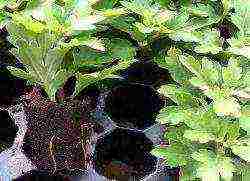 apply at the root the next day after watering or good rain. The third top dressing will be the introduction of organic fertilizers (mullein, bird droppings). However, it is important not to overdo it here, because otherwise the plant can simply be "burned".
apply at the root the next day after watering or good rain. The third top dressing will be the introduction of organic fertilizers (mullein, bird droppings). However, it is important not to overdo it here, because otherwise the plant can simply be "burned".
It is recommended to replant chrysanthemums every three years. In this case, you can simultaneously propagate it by dividing the bush, and then plant these bushes on your site.
Having correctly planted chrysanthemums in the open field and mastered caring for it, you will become the proud owner of the "golden flower" (this is how the name of the flower is translated from the Greek) in your autumn garden!
Chrysanthemum refers to a herbaceous, perennial or annual plant from the Asteraceae or Compositae family. It is very popular among many breeders - the creation of new varieties is still going on, releasing more and more new forms and types on the market.
Chrysanthemum itself can be perennial or annual, growing as a herb or shrub. Its leaves are varied in shape, size, alternating, the color of which can vary from light green to dark.
Chrysanthemum flowers are small, collected in a basket, sometimes forming a very large inflorescence in size, varied in color, double or simple. It has seeds as fruits, but, as a rule, reproduction takes place more by cuttings or by layering.
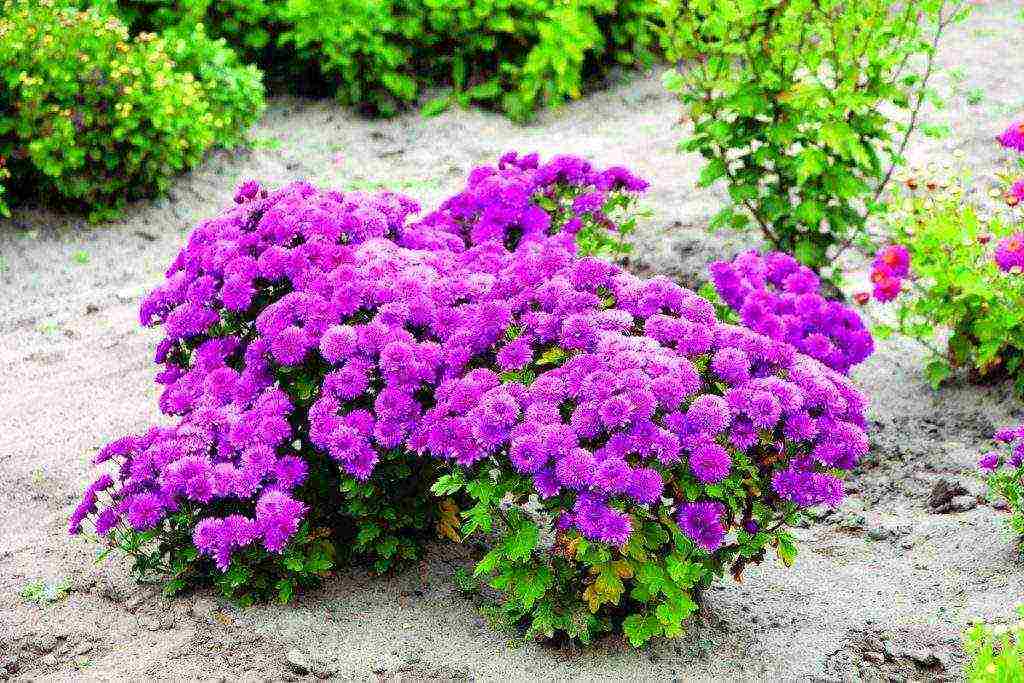
How to plant chrysanthemum outdoors
It is best to plant chrysanthemums in the ground in the beds on a cloudy day, especially when it is drizzling with light rain or immediately after it. At the same time, it is best to plant it without digging a hole, but forming a trench, observing a distance of 35–45 cm - it all depends on the variety, as well as the type of chrysanthemum. After that, water it and pin it, removing in this case the growth point - this will help form a bush, and not drive it up.
Further, it is worth wrapping it up - in this case, dry leaves or a film are optimal in order to create a favorable climate for rooting and remove it only when the chrysanthemum itself takes root and throws out the first shoots.
Planting timing
It is optimal to plant a chrysanthemum only after the spring frosts have passed - this is a period of time in the middle - end of May, after at least 5-6 days after frost.
Site selection and soil preparation
When choosing a place, it is worthwhile to understand that it is very thermophilic, does not tolerate water retention in the hole, and therefore the optimal place for landing is open, elevated areas, with a lot of sun, but not shading.
Any variety of chrysanthemum is very picky about the composition of the soil - for optimal growth, the formation of a bush and the flowers themselves. In this case, the soil should be rich in nutrients - on loose, well-permeable moisture, rich in nutrients, the chrysanthemum will feel very comfortable, delighting gardeners with its magnificent appearance and bright colors.
When the soil itself is not very fertile, very dense in its texture, then just before planting it in open ground, a bucket of rotted manure or compost mass, peat is introduced into the hole itself. Just do not overdo it - with excessive moisture and the presence of fertilizer, the bush will grow intensively and not knock out flowers, which will damage its appearance.
Chicken omet will also be an optimal addition to the hole - a little, so as not to "burn" the root system, mixing it in equal proportions with coarse river sand. Speaking about the acidity of the soil, it is worth choosing neutral or slightly acidic areas for it, the pH of which varies from 5.5 to 7.0
Tillage and preparation of the soil
The soil itself must be carefully prepared before planting chrysanthemums.At the very beginning, it is worth loosing the soil, and if the earth is very dense in its structure, add several buckets of peat, rotted leaves to the planting site, and thus, making it looser and lighter.
To increase the fertility of the land, the best option is to apply the necessary fertilizers to the soil - this can be chicken droppings mixed with sand, diluted manure, or fertilizing the soil with mineral complexes. All this will ultimately create favorable conditions for the growth and flowering of chrysanthemums.
Open ground planting process
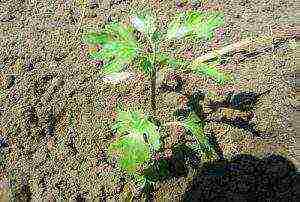
As noted earlier, it is optimal to plant a flower on a cloudy day, when it rained the day before, or on the very day of gardening, light precipitation is drizzling.
It is best to plant it not in a hole, but after digging a trench - its level should not be higher than the growth point, ladies, in the future, the plant did not die, having rotted. The plant is carefully placed in the ground, the root system is leveled and covered with earth, after which it is watered abundantly with water.
The planted plant should be wrapped for some time with sawdust or foliage, thereby insulating it from possible freezing, creating favorable growth conditions and mulching the space around.
Reproduction
Chrysanthemum propagates for a larger case - vegetatively, by dividing the bush, layering and cuttings, since the collection and sowing of seeds for the most part at the exit does not retain its varietal characteristics. But in any case, in order not to be chosen, it is worth considering certain points.
At the very beginning, if you plant or transplant chrysanthemums in the spring, it should be done after all the unexpected spring frosts have passed and the optimal time in this case is precisely the middle - the end of May or the beginning of summer.
When it is planted in the fall, it is worth planting at least until September 13-15, so that the chrysanthemum can take root, rooting before the cold weather.

If this was not done, if only because they did not have time, it will be enough to plant the rhizome in a wide, but shallow flowerpot according to the size of the root system and cut the upper part low enough.
After such manipulations, place the flowerpot in a dark, cool, but not cold place, with a temperature of 4-6 degrees Celsius and store there until spring disembarkation. Periodically, such a flowerpot should be watered, so that the plant simply does not dry out over the winter.
In such a homemade improvised flowerpot, the bush at the end of winter should be taken out into the sunlight or if there is a greenhouse - plant there and often water. At the end of March, after overwintering, it gives a lot of young shoots, which can later be used for propagation by cuttings and vegetative propagation.
To propagate chrysanthemum in this way - cut cuttings about 8-10 cm long, no more than that, after which they are planted in a regular box filled either with perlite or with a mixture of coarse sand, deciduous soil and humus in parts 2 to 1 to 1, respectively ...
Freshly cut cuttings are planted, and rooting takes place for 3-4 weeks, after which they can be planted in a large container or, if possible, in a greenhouse.
Chrysanthemum care
The planting itself, as well as the subsequent care of the chrysanthemum, is not difficult, but with all this it has its own rules, which should be known and remembered by both a novice florist and a more experienced gardener. In particular, the seedlings themselves, already planted in open ground and which have already thrown out 8 leaves, should be pinched off so that the whole bush does not go up, but to the sides, so to speak, its bushiness increases.
With the same purpose, it is worth pinching young shoots growing from the sides - this is how you can get a symmetrical in shape and quite dense, beautiful bush.
This method of forming a bush does not apply to large-flowering varieties - in such varieties, the side shoots should be completely removed, and they can be used for subsequent rooting.
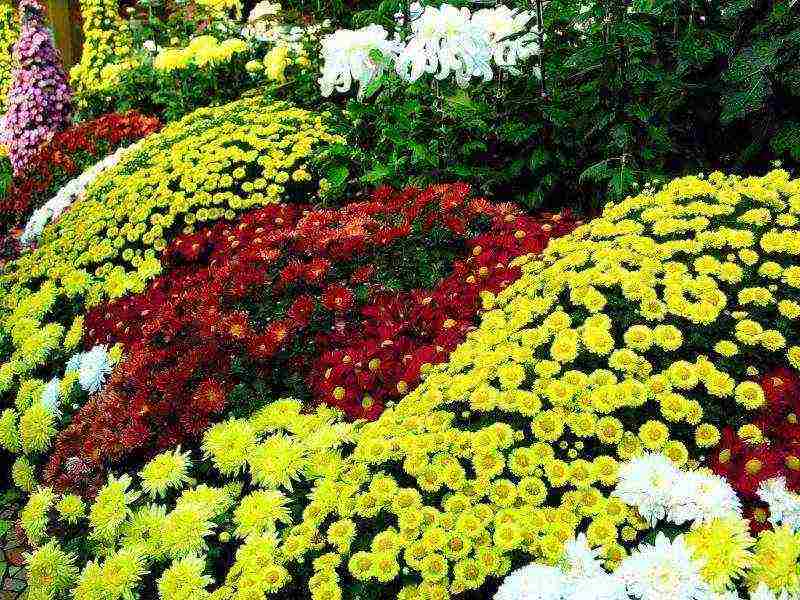
At the same time, tall varieties, branches should be maintained, otherwise the bush itself will fall apart, break - it can be tied to high, metal or wooden pegs, a net or a wire structure, that is, to any supports that are easy to make from materials at hand.
With regard to watering, it is worth watering it very abundantly every time. - in case of a lack of water, the bush may turn numb, and the flower itself will not be so beautiful, small and inconspicuous. For this, the optimal water is the collected rain moisture, or pre-settled, with the addition of a small pinch of ammonia or ammonium nitrate.
It is worth watering the plant at the root so that the water does not fall on the foliage itself, and then, when the water is absorbed, the soil itself around should be loosened, any weeds removed.
Priming
The soil for chrysanthemum should be loose, but loose and well-permeable to water, nutritious, rich in nutrients. Speaking about the acidity of the soil, it is worth choosing neutral or slightly acidic areas for it, the pH of which varies from 5.5 to 7.0. Otherwise, in dense, heavy soils, the plant dies, mostly rotting or does not produce beautiful greenery and a flower.
Top dressing
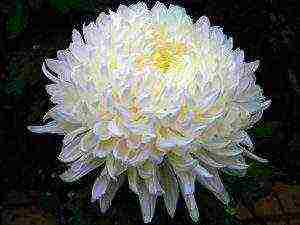
The care itself provides in its technology and mandatory feeding - and in this regard, it is worth remembering that during the entire growing season it is worth carrying out such manipulations at least 3 times.
The best option is a combination of mineral fertilizers and organic matter - with regard to mineral complexes, special attention should be paid to ammonia nitrogen, due to which the growth of the green part of the plant will go, as well as phosphorus-potassium will help to form large and fragrant flowers and which should be used in the formation and formation of a bud.
As for organic fertilizers, here the optimal one is ordinary rotted cow dung or diluted chicken manure.
Fertilizers should be diluted before use and the bush itself is fed the next day after rain or abundant watering - you should not feed the chrysanthemum on dry ground, but only after moistening it well.
The very first top dressing should be carried out after 7-8 weeks after planting, while it should be said that many experienced flower growers say that it is better to underfeed a little than to simply burn with a concentrated solution.
Diseases and pests
Speaking of diseases, in the presence of thickets or in the absence of compliance with the rules of cultivation, fungal diseases can affect it. In this case, we can talk about such diseases, provoked by a fungus:
- verticillary wilting of a plant, when the fungus itself infects it, penetrating the root system, affecting the leaves - the latter turn yellow and fall off.
- powdery mildew, when the leaves and shoots themselves, the buds and the flowers themselves are affected - in this case they become covered with a whitish bloom.
- rust, in which the ground part of the chrysanthemum is covered with brown spots, the leaf turns yellow, and the stem itself dries out.
- gray rot, when the plant becomes covered with brownish spots, which after a while become covered with fluff - it is he who is the cause of the rotting and wilting of the chrysanthemum.
The fungus from the affected bush can be eliminated with preparations containing copper, which can successfully overcome septoria, as well as rust and rot. Bordeaux mixture also helps to eliminate powdery mildew and gray rot from the plant, and soap emulsion and colloidal sulfur - rust.
If it is affected by pests, it is most likely that the chrysanthemum itself was attacked by aphids. It is this pest that first affects the green part, settling on the inside of the leaf or at the bottom of the bud. Aphids, as well as the larvae laid by it, suck the juice from the chrysanthemum and, as a result, slow growth and flowering, fall of foliage and buds.
If several leaves of aphids are affected, the pests should be destroyed by tearing off the leaves, but if the aphids have covered the plant itself tightly enough, it is worth treating it entirely and completely with actellik or aktara, adding simple laundry soap to the mixture itself.
Also, the bush itself can be affected by the meadow bug - it is he, like aphids, his larvae also feed on plant sap. As a result of the defeat - the fall of foliage and buds, which before this turn brown and become covered with spots, as well as the complete death of the entire plant. To eliminate the meadow bug and its larvae, the greens should be treated with a solution of a simple baby shampoo - it's easy to prepare it, just add a tablespoon of shampoo to 10 liters of water.
In addition to aphids and bugs for chrysanthemums, ordinary garden snails and slugs also carry a lot of danger - they devour the greenery of the plant. In this case, you should not apply tough measures to combat slugs and snails - this can disrupt the ecosystem of the entire area with flowers, and they themselves perform an important function of orderlies.
It is best to attract birds to your site - it is they who help in the prevention of slugs and snails, and also protect the bush itself with a small fence, in order to prevent the living creatures themselves from reaching the bush. As an interesting option for fighting slugs and snails, there is an arrangement of saucers with beer in the bushes of plants and after a while simply gather a rich "harvest" around them.
Chrysanthemum transplant
According to the technology of growing in one place, the bush should not grow for more than 3 years - otherwise the plant will, so to speak, mope and be capricious, often get sick, and the leaves and flowers will shrink. In this case, it is worth transplanting it in the spring - and in this regard, you can divide the bush and plant the flower in this way, carefully digging it out and using a sharp tool to divide the dense root system into parts. Next, it is worth sprinkling the cut with coal and planting, as described above.

The main autumn flowers are chrysanthemums, planting and caring for these flowers in the open field is not particularly difficult, but they require compliance with a number of conditions when growing, both in spring and in autumn. Do not break the rules if you want to plant a flower from a bouquet or root a shoot, but to propagate a plant in the fall, check out the main points. If you do not know how to form a beautiful bush with a ball, then remember, you need a pinch and pruning for the winter, or try to grow a special variety that will only need a single pinching ...
Methods and timing of reproduction of chrysanthemums
Chrysanthemums are annual - they are grown annually from seeds, and perennial - they can be propagated by seeds, cuttings, mother plants or by dividing a bush. Chrysanthemums are planted in spring and autumn, each season has its own advantages:
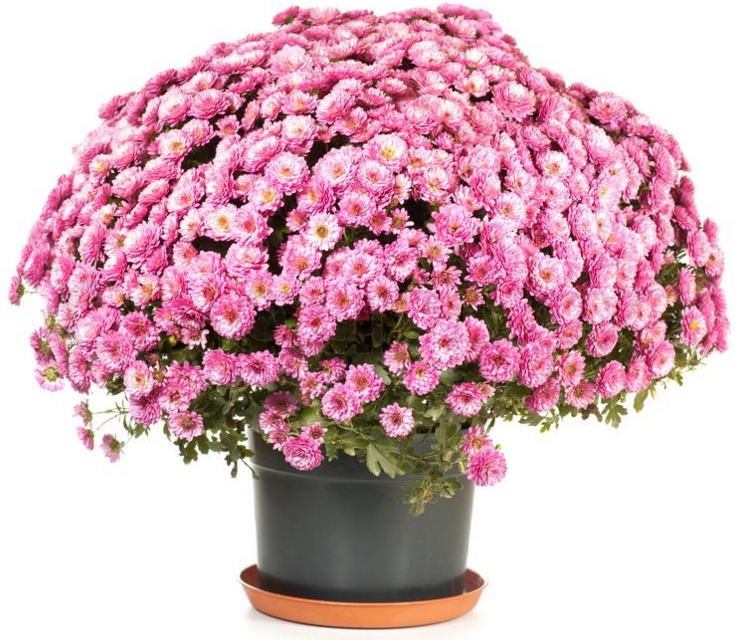
- Seeds sown in open ground in May, and when the seedlings grow by 10 cm, they are pinched. In the fall, chrysanthemums are already blooming
- Cuttings Is a very popular breeding method for chrysanthemums. You can grow a bush by cutting off a stalk even from a bouquet. How to root a chrysanthemum shoot? A shoot about 6 cm long is rooted in a soil consisting of sand and peat. The box covered with glass is kept in a cool place, not higher than + 15 ° C. When the roots appear, the plants are planted in separate pots and then, with the end of the frost, in the open ground. If you purchased a cuttings of the desired variety in the fall, do not plant it in the ground, but root it in a container and leave it in a cool room until spring
- Uterus - this is the overwintered rhizome of chrysanthemum, from which shoots will go, it can be purchased and planted in early spring
- Dividing the bush - the only way to plant chrysanthemums in autumn, in which the plant is carefully dug up, the roots of the mother bush with shoots are divided into several specimens with pruning shears and planted. This procedure is supposed to be carried out every two years to rejuvenate the plant.
Chrysanthemums, planting in spring and autumn
Please note that if you decide to grow chrysanthemums, planting and care in the open field differ in spring and autumn - with spring planting, mother plants and cuttings take root better, but in autumn you can choose a flowering bush and not be mistaken with its appearance.
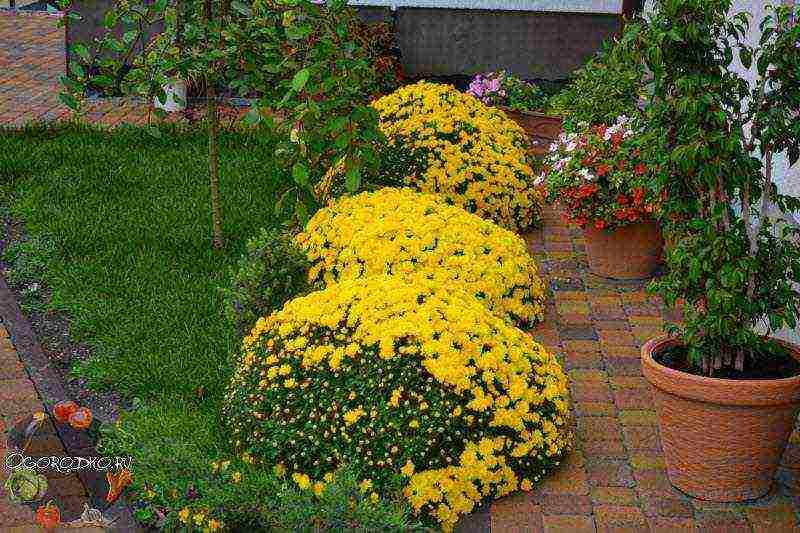
In very frosty winters, choose Korean small-flowered hybrids of chrysanthemums, which are nicknamed the oak - this species unites many varieties zoned in the middle lane and the Moscow region. Large-flowered Indian chrysanthemums are tall - they grow up to a meter, and sometimes up to one and a half, but they are afraid of cold weather and easily freeze out.
For chrysanthemums, choose a sunny, preferably elevated place. Flowers do not like stagnant moisture, therefore, the waterlogged soil is drained by adding a layer of coarse river sand to the planting hole. The soil is preferable slightly acidic or neutral, light and loose. Too dense - mixed with peat, humus or rotted compost.
Chrysanthemum plants are placed every 30-50 cm.The pit is dug shallow so that the shoots on the mother liquor or two-thirds of the cuttings are not covered with earth, when dividing the bush - this is about 40 cm.No more than 0.5 kg of humus or compost is added to the hole. If you overdo it with fertilizers, the flowers will be small, and only foliage will be lush. It is recommended to water the roots with a stimulant (Epin, Kornevin, Heteroauxin), and then cover it with soil and compact it. After spring planting, it is advisable to cover the cuttings from the sun with a spunbond for a couple of weeks.
When planting in autumn, the chrysanthemum bush must be watered abundantly, this will compact the soil, eliminating voids in it, because of which the roots can freeze. In addition, the flowers are cut and a third of the stems are left for the nutrients to go into the development of the root system.
Chrysanthemums, care - watering, feeding, pruning, shelter
Chrysanthemum cannot stand moisture stagnation, but loves watering - without water, the stems become tough, the flowers become smaller. At the same time, the flower does not tolerate sprinkling, it must be watered at the root, preferably with rain or settled water. After watering, the soil is loosened to avoid crusting.

In spring, for chrysanthemums, nitrogen fertilization is necessary for rapid growth; it can be carried out 2-3 weeks after planting. In the second half of summer, with the beginning of chrysanthemum budding, phosphorus-potassium fertilizers are applied to ensure lush flowering and strengthening of plants before wintering. In the fall, you can feed the flowers a little with organic matter. Tall varieties are tied up, as their fragile stems can break.
The onset of frost is a signal that it is time to leave for the winter. The trunks of chrysanthemums are cut in late autumn, leaving 10-centimeter stumps and insulated with sawdust or foliage. The most delicate varieties are wrapped on top with a covering material and something flat is placed on top to protect it from moisture - for example, a plywood board. Some growers dig up the roots and store them in a dark, cold cellar in winter to make sure the variety is preserved.
How to create globular chrysanthemum bushes
For flowers such as chrysanthemums, planting and care in the open field is not all that is needed and simple processing will allow you to create real masterpieces from them.
Chrysanthemums after winter are pruned and pinched to get a beautiful spherical bush. There is a variety in which the bush itself grows in the form of a ball, without needing to be formed - this is chrysanthemum multiflora, a low-growing bush up to 20 cm in height - when two pairs of leaves appear on the shoot, it is pinched, and then the ball forms itself.

Multiflora can be grown not only in a flower bed, but also in a pot. But, at the end of flowering, the aerial part of the plant is cut off and sent to rest - in a dark, cool place, for the whole winter. Periodically dormant chrysanthemums are watered so that the roots do not dry out. In February, the first shoots appear, which means that the plant has woken up, and it is time to get it out of the basement.If a spherical chrysanthemum grows in a flower bed, the stems should be cut to 10 cm and covered with sawdust and non-woven fabric for the winter.
Multiflora loves soil rich in fertilizers, add more humus and wood ash to the hole when planting. If you grow it in a pot, you can prepare the soil from 30% humus and 20% sand, the remaining 50% is sod land.
You can also form a ball from other types of chrysanthemums, in small and medium-flowered ones, the main shoot is pinched when it reaches 10-12 cm, then the lateral shoots that have grown to the same length are cut off, they then actively branch, pinching is done until the buds appear.
In large-flowered species of chrysanthemums, stems 15 cm long are cut, in total one or two pinches are carried out no later than June, in addition, they are stepchildren - from mid-July, shoots that appear from the leaf axils are removed daily, and starting from August - every three days, then you can get a spherical bush with large flowers up to 10 cm in diameter.

Among the colossal variety of garden plants, including peduncles, a rather high place is occupied by a magnificent perennial garden chrysanthemum, which is also called the queen of autumn. This beautiful, tart-smelling flower opens its buds at the end of August, and pleases us until the very frost, if we provide it with appropriate and regular care, showing patience and diligence. These flowers are completely unpretentious, they do not need constant supervision, however, proper care of the garden chrysanthemum implies the strict implementation of all the recommendations, although there are not many of them. If you do everything right, then the plant will delight you for a long time with a variety of colors and shapes, from the end of summer to the very winter snowfalls.
Persistent and hardy chrysanthemums: growing and caring for the garden
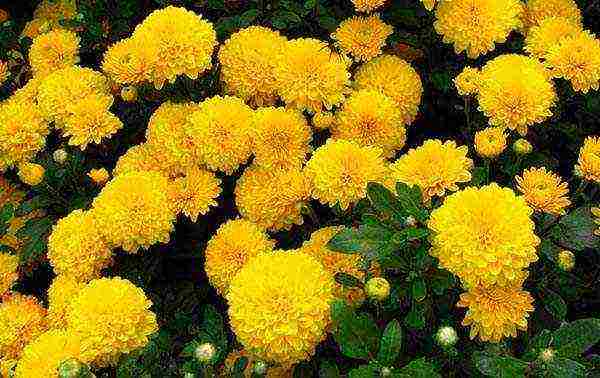
You need to understand that chrysanthemum, the care of which we will discuss in the garden today, was brought to us a long time ago from the East. The ancient Chinese and Japanese gave this flower some mystical meaning, it was considered a symbol of the sun, joy and optimism. Indeed, how can you not believe the legends, at least once having seen the magnificent pom-poms of different-colored buds, delighting with their bitter-tart smell, as well as long flowering. Among experienced florists, as well as professional breeders, it is customary to divide all types and types of chrysanthemums into several main subcategories, in order to simplify the selection of a suitable flower for your own plot.
Worth knowing
There is simply a tremendous number of the most diverse varieties of chrysanthemums, which can differ not only in color, but also in the size of the inflorescences, in the height of the bushes, and so on. For example, there are species that are intended solely for cutting and making bouquets. They bloom early enough, but stop flowering rather quickly.
- Chrysanthemums of simple form, which are most often found in our gardens and flower gardens.
- Curly and double chrysanthemums, already more "civilized" varieties, bred artificially.
- Large-flowered plants that are best suited for a wide variety of compositions and bouquets.
Chrysanthemum varieties for planting and care in the open field: take into account the nuances

It is very important to understand that there are no clear criteria differentiating the color belonging to the varieties of one or another type of chrysanthemum. These amazing flowers really amaze with a diverse palette, so even the most meticulous gardener will definitely choose something for himself, just the one he has dreamed of for a long time. Caring for chrysanthemums of various varieties and species in the garden is no different, therefore you should not worry that something will be done wrong, the main thing is to carry out all the manipulations with the plant on time, and then you can expect a violent flowering by autumn.
- Most often, gardeners prefer garden bush chrysanthemums, which are perfect for landscape design of any home garden.
- A great option for your garden will also be feathery terry varieties, which have such densely planted petals that the shape most of all resembles small balls.
- The greatest demand on the market is for pompom chrysanthemums, the flowers of which have an ideal ball shape. They are quite large, and the variety of colors will allow you to anticipate any desires.
- The unusual shape of the tubular petals attracts attention and bristly chrysanthemums, which simply cannot be ignored.
- The anemone-like varieties of these flowers got their name from their resemblance to anemones, and it will not be at all difficult to recognize them, they have a wreath of petals and a convex center. The smell of such delicate flowers is very strong and is audible until the very frost, for which they are especially loved by amateur gardeners.
- More rare varieties can be called spoon-shaped chrysanthemums, which got their name for a reason. The fact is that their petals resemble a teaspoon in shape, they are beautiful and unusual.
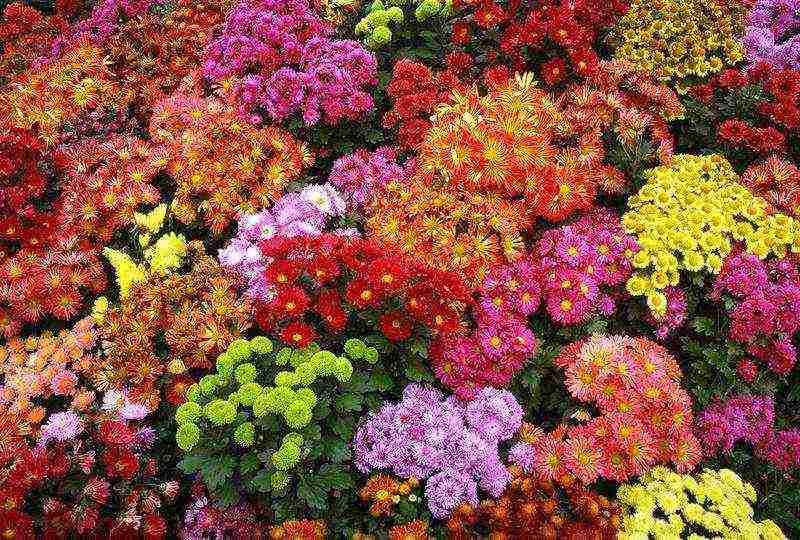
Perfect for planting and caring for chrysanthemums in the country, ordinary, that is, simple flowers, as well as semi-double varieties. Outwardly, they may slightly resemble a chamomile, which gives them an unobtrusive classic charm and incredible charm.
The best garden chrysanthemums: planting and care in the garden or flower bed
First of all, you need to understand that caring for a garden chrysanthemum begins with planting, since it requires a special place, as well as soil. It is best to choose a slightly elevated place where water will definitely not accumulate. The soil should be loose, not clogged, with good drainage ability. In addition, the place must be sunny or slightly darkened, but by no means shady, otherwise your flowers will stupidly stretch with stems up, and flowers may not appear on them at all.

- For planting, it is better to buy a special soil, which by definition will be quite hygroscopic and also loose. You can pre-mix the soil with peat and gravel, the main thing here is not to overdo it, so that the nutrients for the flower remain in it, because this, nevertheless, is far from a cactus, which is enough to water once every six months.
- Chrysanthemum does not like excessive watering, because the roots can rot. But excessive overdrying, too, should not be allowed at all. This flower has a superficial appearance of the root system, and with a lack of moisture, it will first become dry, its leaves will turn yellow and curl, and subsequently the plant may die altogether.
- For transplanting and planting, it is best to choose rainy or even cloudy weather, so that the plant can more easily endure stress.
- The hole is made from twenty-five to forty centimeters, depending on the size of the rhizome, it is abundantly spilled with pre-settled water, after which drainage is laid on the bottom. For example, washed and coarse river sand is perfect.
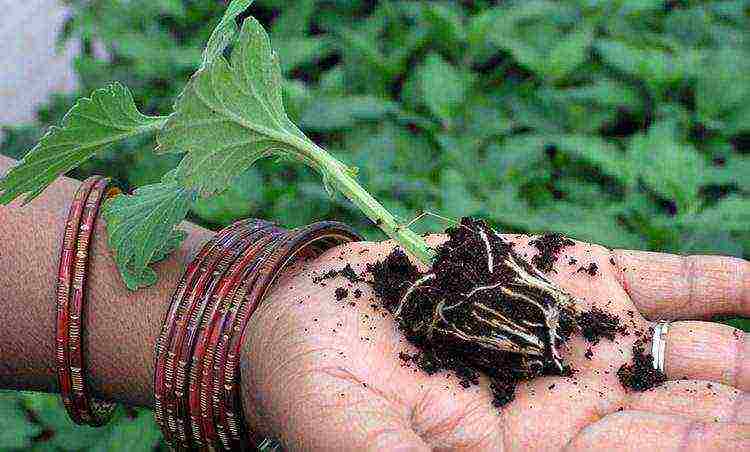
After planting, the chrysanthemum should only be slightly sprinkled with soil, it is not necessary to deepen it excessively, since it is necessary to compact the soil with great care. For tall varieties, it is better to immediately provide support, in the form of a garden trellis, or even just a beautiful twig dug into the ground. It is imperative to pinch immediately, after planting, and then, after about fifteen twenty days. This will not only allow the correct formation of the shape of the crown of the chrysanthemum, but also lead to a denser growth of young shoots with inflorescences. After the plant is finally rooted, it remains only to figure out how to care for the garden chrysanthemum so that it delights with fragrant flower pom-poms for a long time.
Important
It makes sense, after planting chrysanthemums, to shade them somewhat, to hide them from the bright sun, since the plant is already under stress. The easiest way to do this is with a special garden nonwoven.Here you need to strictly monitor that your "roof" does not touch the stems and leaves, as this negatively affects the overall growth. The easiest way is to build a kind of frame-boxes from thin strips, upholstered with an appropriate fabric.
Methodically and carefully: how to care for a chrysanthemum in the garden
In order for you to grow a beautiful decorative chrysanthemum in the garden, it needs to be provided with appropriate care, and you do not need to think that only experienced flower growers can do this. These flowers are very unpretentious, as already mentioned, therefore, even those who have not even grown radishes before can cope with the cultivation. The main catch may lie in watering, which should be regular, but by no means excessive, as this will simply destroy your flowers. A large amount of moisture can lead to decay of the roots, but a lack, to stiffening of the stems, and the chrysanthemum will no longer be so beautiful and attractive.
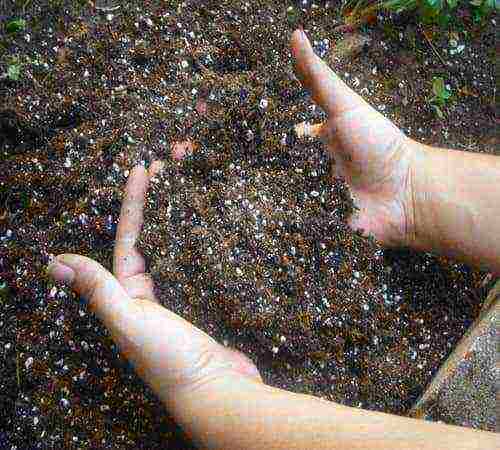
- Regularly, as needed, but at least once every two weeks, it is necessary to loosen the soil at the rhizome with high quality. In this case, you need to ensure that there are no pits and holes in which water can accumulate, which is detrimental to the chrysanthemum.
- Feed the flowers during flowering by diluting the mullein one in ten with water. Such procedures can be carried out weekly. To stimulate flowering, phosphorus-potassium fertilizers are perfect, and for foliage growth - the notorious phosphates and nitrogen-containing compounds.
- It is worth remembering that at no time should fertilizers and fertilizing fall on leaves and flowers, since in this way you can only earn ugly and dangerous burns for the plant. Among other things, it is better to underfeed a chrysanthemum than to overfeed it, this is a law that must be observed unswervingly.
Reproduction and transplantation of chrysanthemums in the garden: how to care correctly

Please note that all perennial plants must be propagated exclusively by dividing the rhizome, as well as by cuttings. Seeds can be grown, but no one can guarantee that they will retain varietal characteristics. In most cases, when growing chrysanthemums from seeds, selection must be started from the very beginning. Transplantation and reproduction of such beautiful flowers should be carried out in late spring or early summer, while the plant has not yet thrown out the buds and is not going to waste energy on flowering.
However, circumstances may develop in such a way that the planting material appeared closer to autumn, which confuses novice florists. Before the beginning, or in extreme cases, until mid-September, the flowers can still germinate, if you have time, they will take root and overwinter quite easily. However, it is better not to leave late seedlings in the open field, but to plant them in a wide, but not deep pot, and then put them in a place where the temperature will not drop below five degrees Celsius, but will not rise higher either. The plant will need to be watered regularly, but not too abundantly.

At the end of winter, if possible, the plants can be transferred and planted in a greenhouse or greenhouse, where they will need to be watered much more often and more abundantly than in winter, in order to convey to them that it is time to start growing. However, this is not all, it is worth finally mentioning diseases and pests from which you will have to protect and protect flowers, because they simply have no other protection.
- Ticks and aphids cannot stand high humidity, if watering is carried out regularly, then this scourge can be easily got rid of. It is quite possible that even spraying the stems and flowers will help, the main thing is that the water is clean, soft and settled.
- Caterpillars, as well as leaf rollers and snails do not tolerate such drugs as Fitovermi, Ratibor, Aktara and others, you can get better advice and find out more in a specialized store.
- Inspect stems, plants, and flowers as often as possible to immediately detect a threat and eliminate it in time.Damaged plant parts, leaves, stems or flowers should be removed immediately and removed from the site, and then closely monitor the plants.
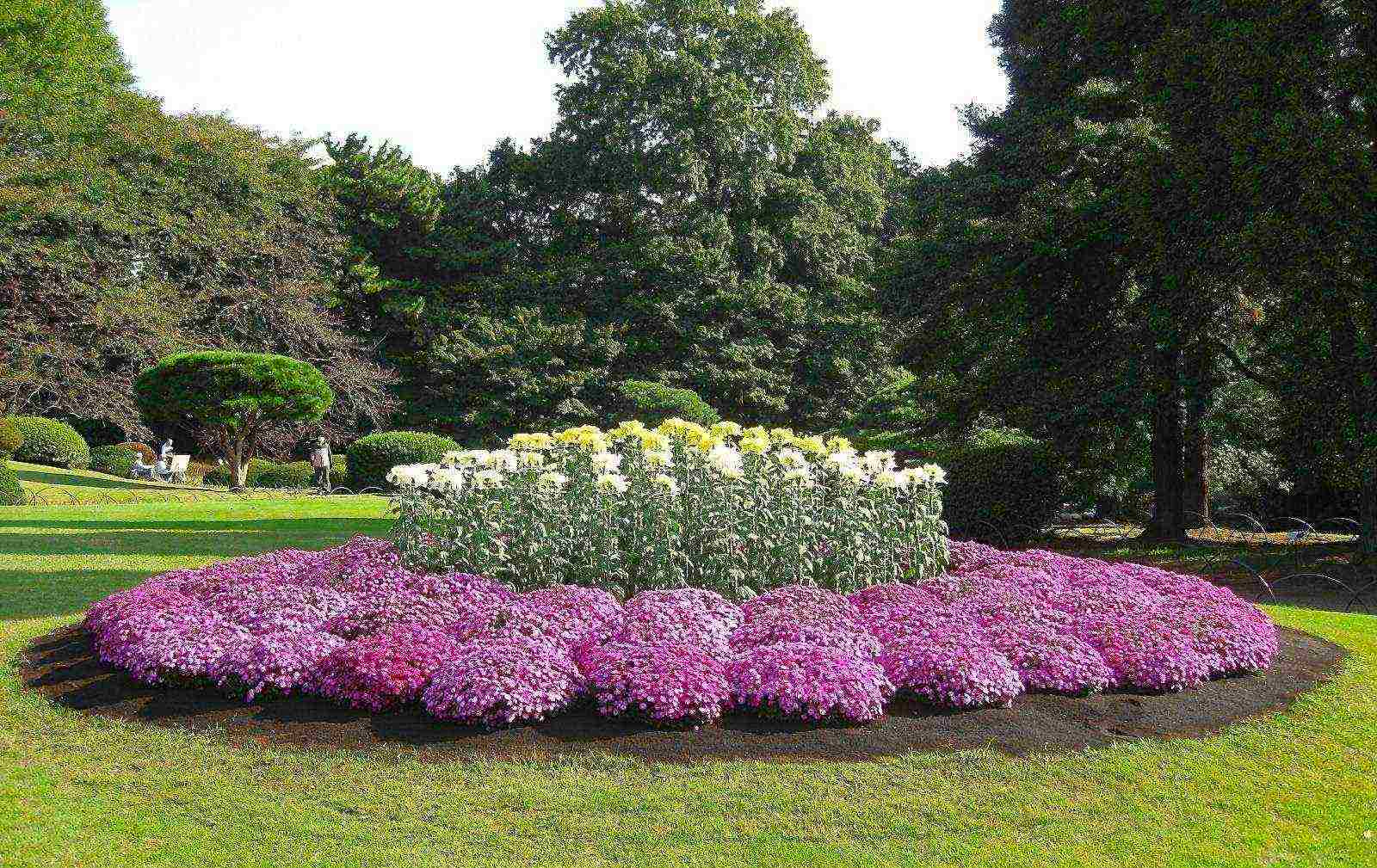
It turns out that caring for a garden chrysanthemum does not mean anything complicated and unrealistic, and even an absolute beginner can cope with such a task. The main thing here is attentiveness and sequence of steps, and the flower will do the rest by itself and will delight you for a long time with a magnificent view and wonderful aroma.

